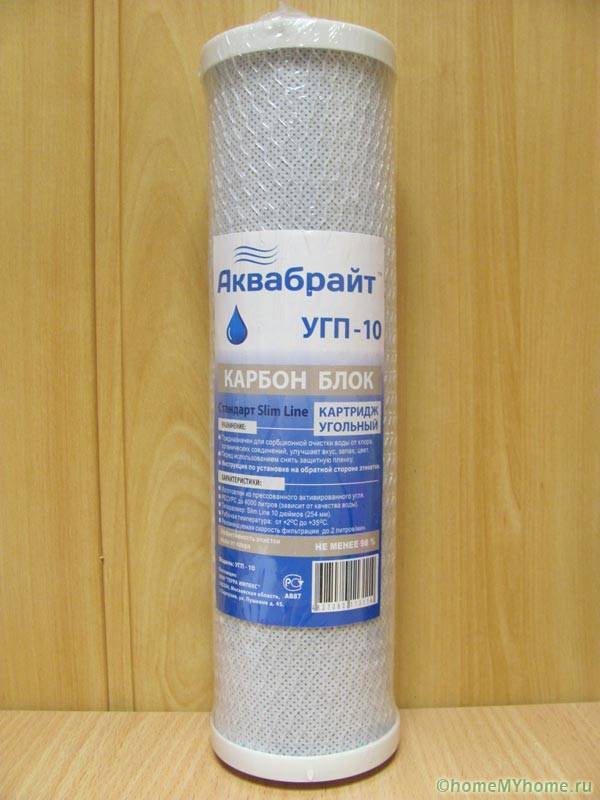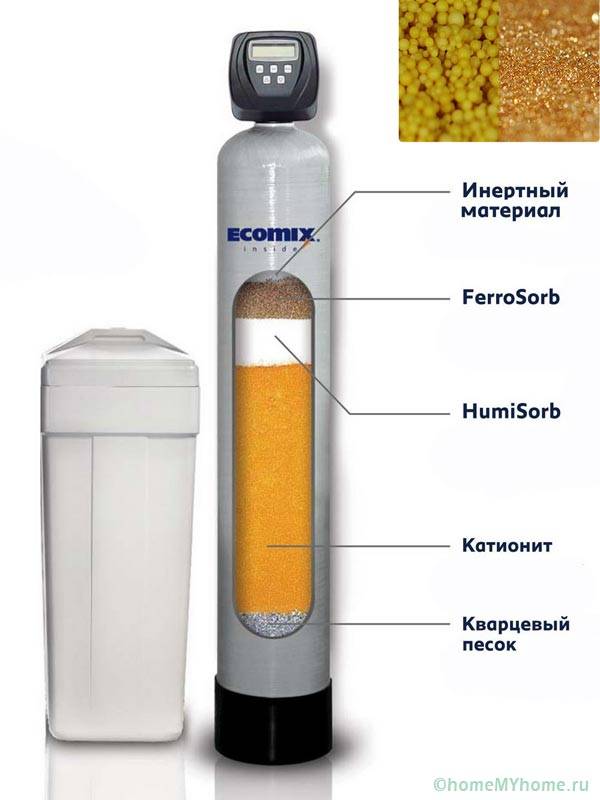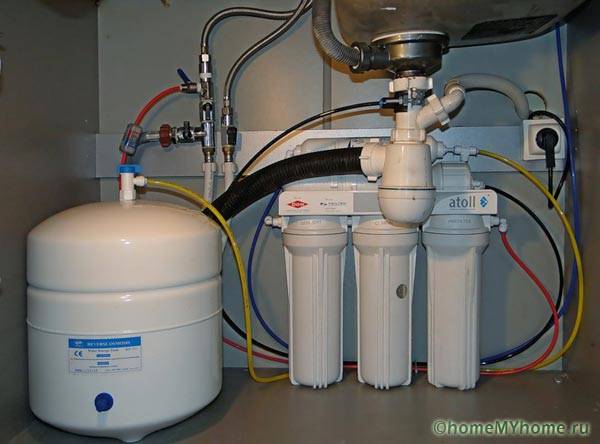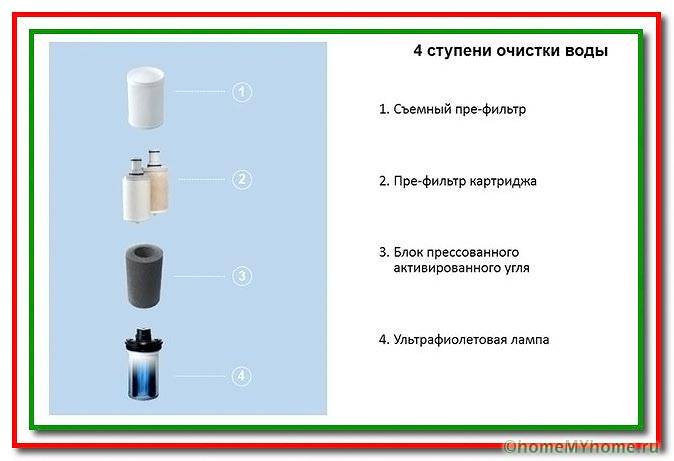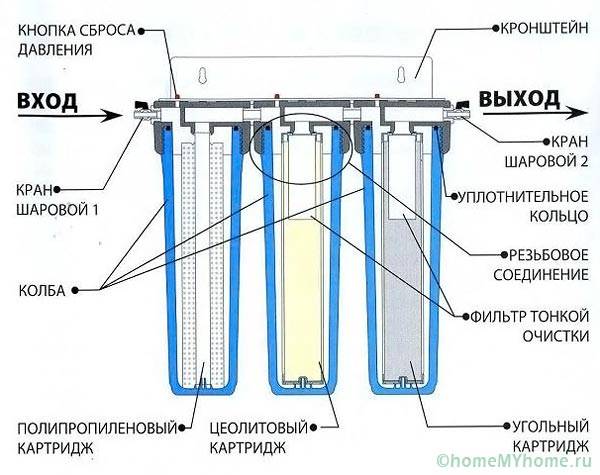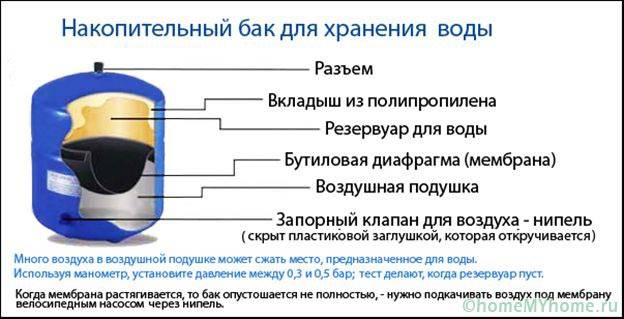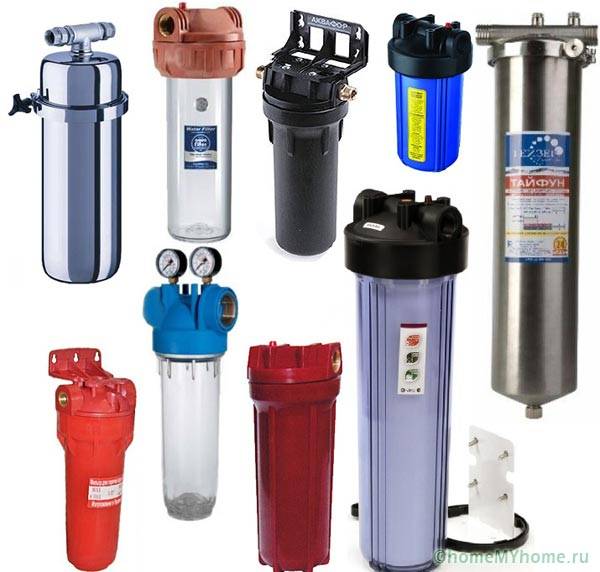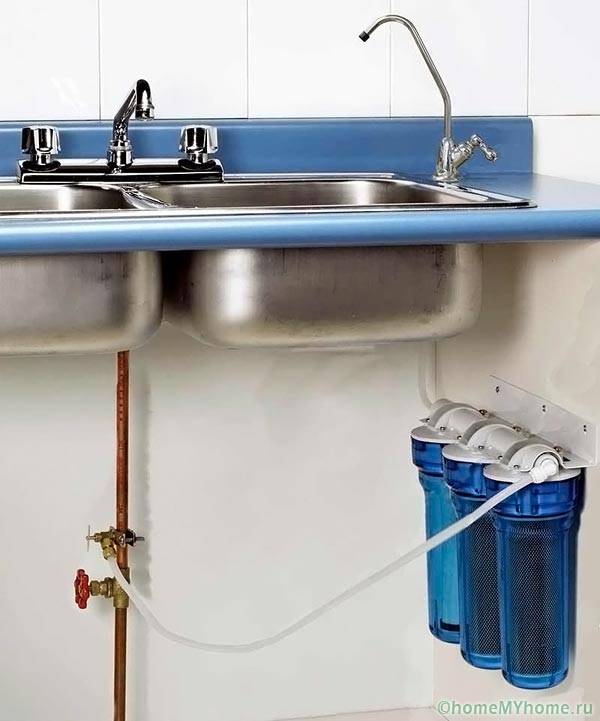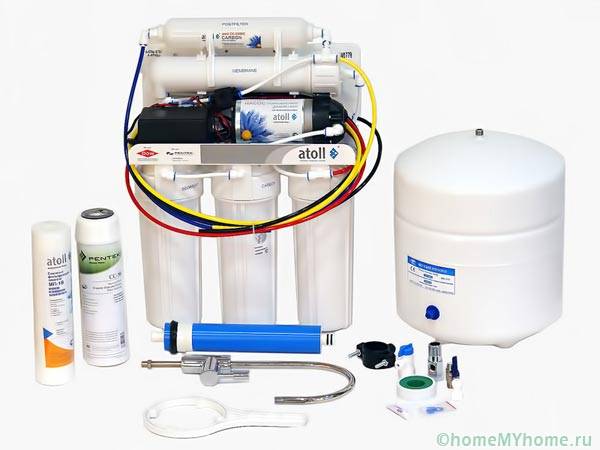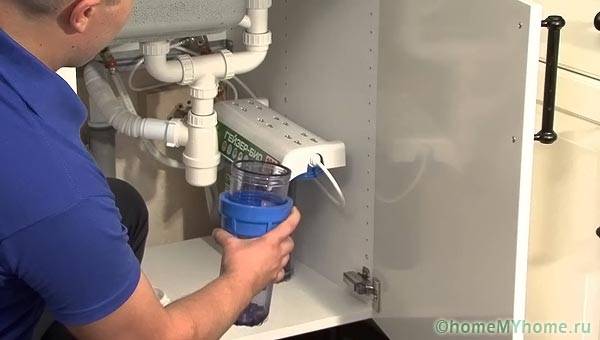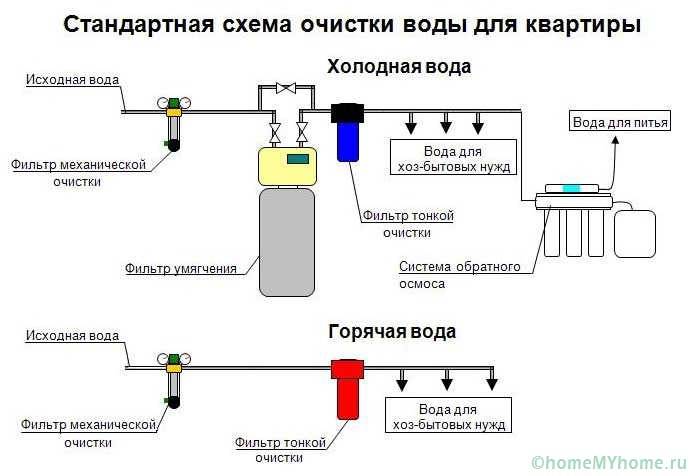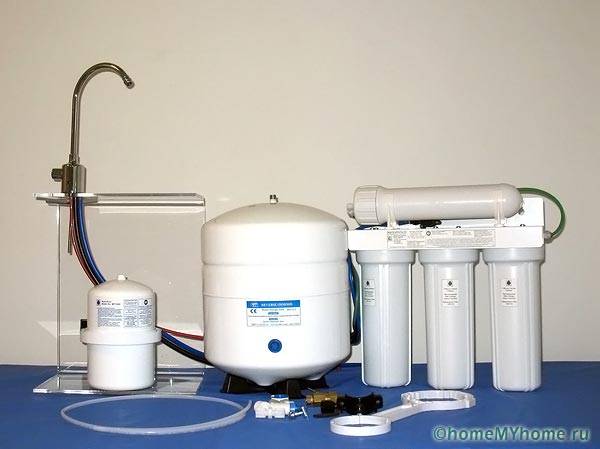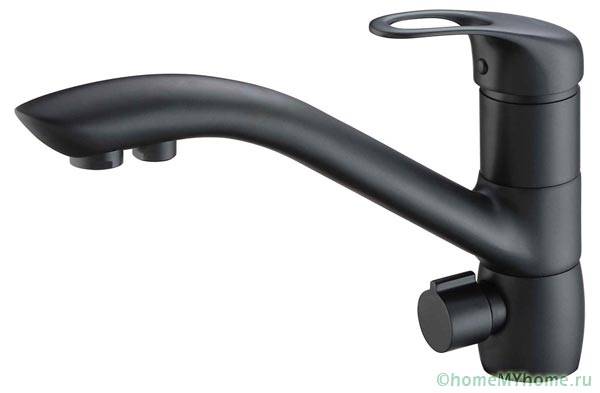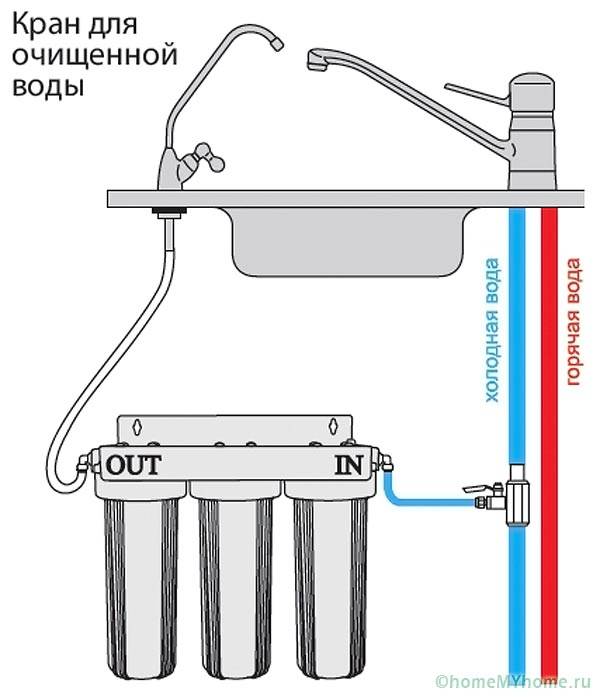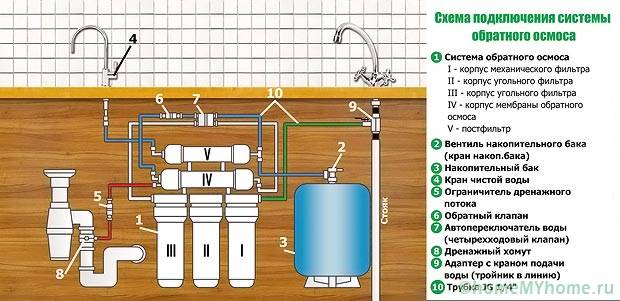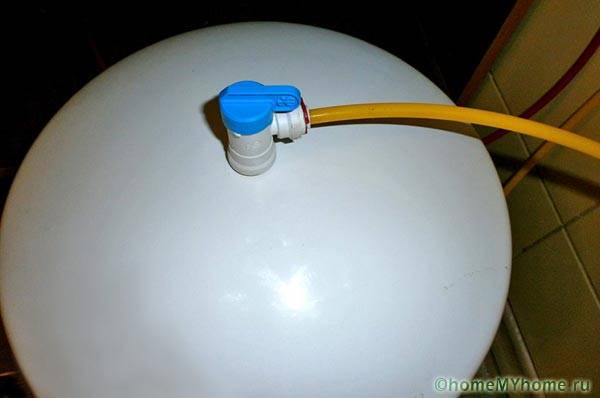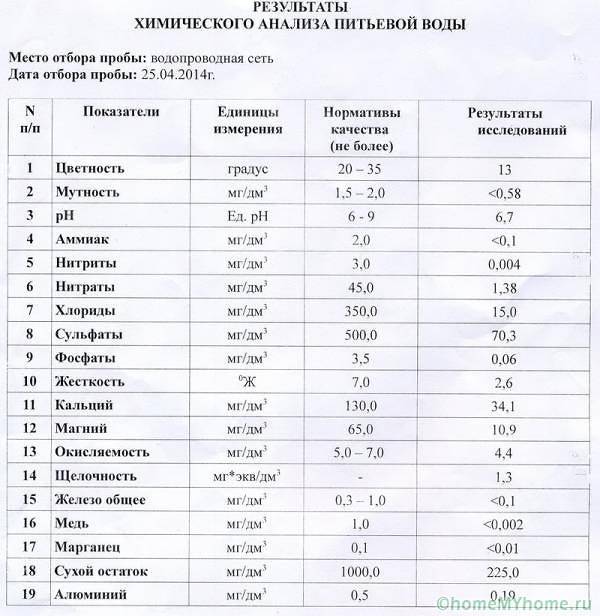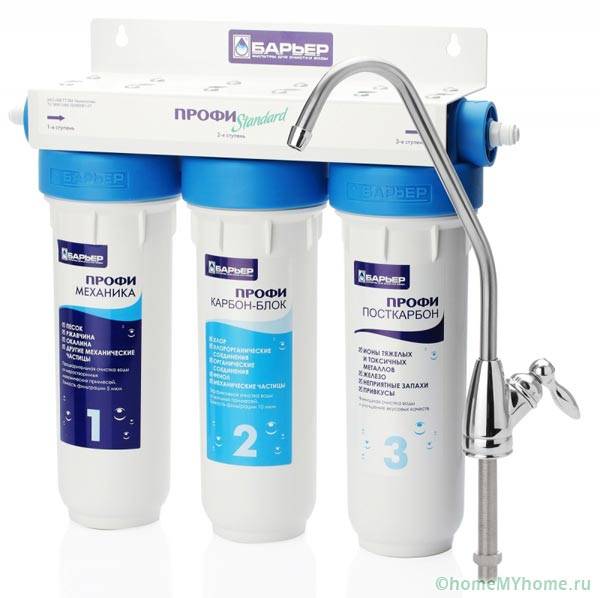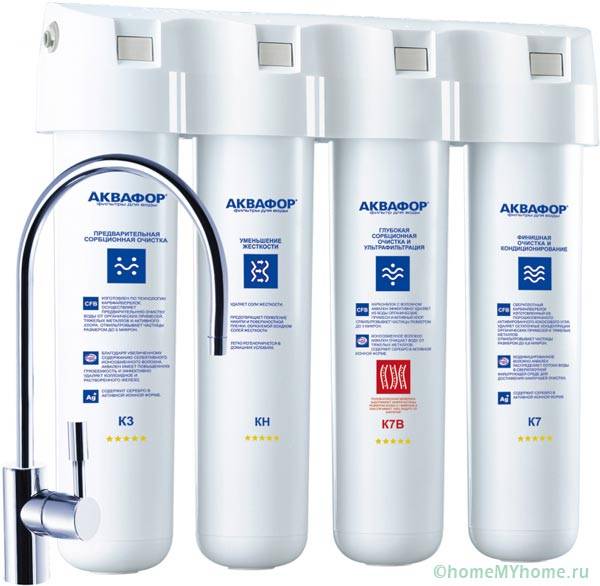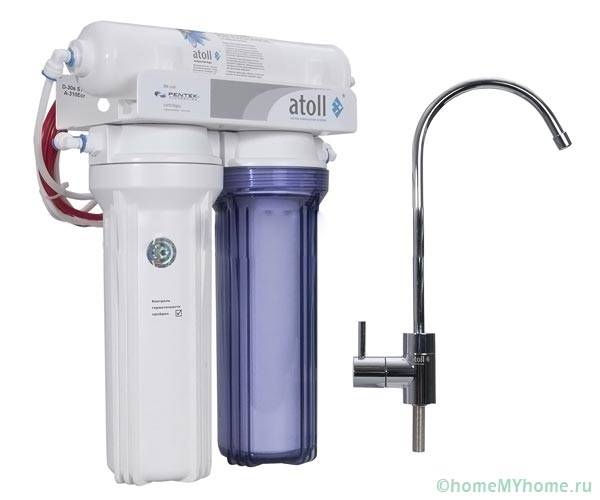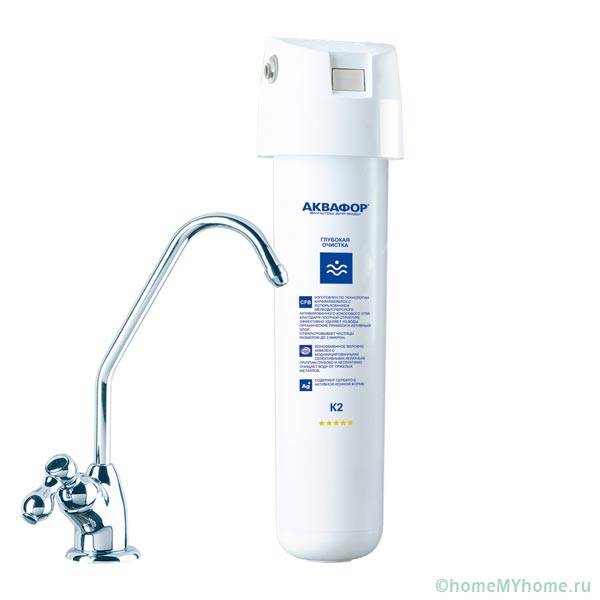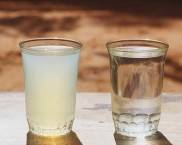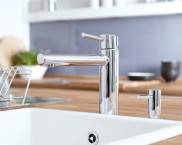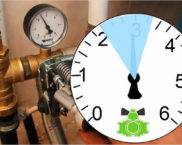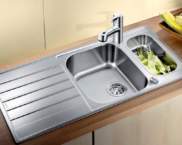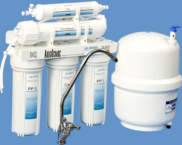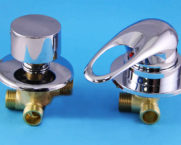Water filters under the sink - which one is better?
DTo increase the comfort of living, preserve health, tap water is subjected to additional purification. Pitchers, tap nozzles do not satisfy the quality of the outlet water. Therefore, they often choose filters for water under the sink: which one is best to help you find out this manual.
The content of the article
Video: everything you need to know about water filters
Types, principle of operation, requirements
Before choosing water filters for washing which is better and cheaper to operate, it is necessary to consider the existing technologies for purifying drinking fluids in cold water systems. There are several types of filters:
- mechanical - meshes, polymeric porous or fibrous materials retain only large suspensions;
- sorption - active substances-adsorbents (activated carbon, peat, ash, slag, clay) from the water are drawn out soluble impurities;
- ion exchange - soften the liquid due to the release of fluoride ions, metals from the filter cations;
- ultraviolet - an electric current is passed through the stream, the resulting ozone destroys toxins, microbes, bacteria.
The best are reverse osmosis filters, which create back pressure inside fine-pored membranes. Small water molecules pass through them without hindrance, any compounds of larger fractions are deposited on the membranes. The disadvantage is the distilled quality of the water, which becomes pure but tasteless.
Related article:
All technologies have drawbacks, therefore, in practice, multi-stage filtration equipment is created:
- Stage I - jugs, nozzles, not considered in this manual;
- Stage II - a special cartridge filled with an adsorbent (usually coal) is added;
- III - V stages - a membrane or an ion-exchange cartridge provides fine cleaning, activated carbon collects the remaining impurities.
The equipment installed under the sink is called flow filters. Cleaning is performed at a speed of 1.5 liters every minute, the resource of cartridges is 1500 - 2500 liters. After that, replacement is required (approximately once a quarter).
Helpful information! To use clean water, you will need to insert a separate tap into the sink or purchase special plumbing with a built-in flow switch from a conventional water supply / filter.
System composition, step-by-step installation
When choosing for your own needs water filters for washing which is better, do not forget about the size of the equipment. The design of the treatment system consists of the following elements:
- console - needed to accommodate flasks with cartridges (1 - 5 pieces);
- flexible hoses - connect the flasks in the desired sequence;
- branch pipes - inlet, outlet;
- tap - purified water flows through it.
The main feature of flow filters is that only part of the liquid from the cooking water supply is cleaned. The rest of the flow is used for washing, cleaning, dishwasher through the main mixer. Failure to do so will dramatically reduce cartridge life. Especially pure water is not needed for domestic needs.
Helpful information! In dwellings with low pressure characteristics, interruptions in water supply, you will additionally need to mount a pump. The package may also include a UV disinfection lamp. For reverse osmosis filters, a hydraulic accumulator (membrane tank) is required, which will require additional space.
Manufacturers usually simplify the task for users by using uniform sizes of flasks, inside which filters of different designs are mounted. This makes it easier to customize the system for the specific quality of the tap liquid.
Site selection and sidebar
The filtration system requires periodic maintenance (replacement of flasks), therefore, during installation, the console under the sink should be shifted to the side relative to the sewer siphon. Otherwise, the console will have to be constantly unscrewed to replace the flask.
The flasks and the accumulator are completely sealed, so they can be mounted horizontally and vertically. At a pressure below 3.5 atmospheres, some filters will not work; you will need to add a pump to the system inlet.
A coarse filter (FGO) is usually already built in in front of the meter, but its duplication directly in front of the equipment in question will not hurt.
Helpful information! The FGO mesh plug should point straight down to make it easier to clean, the direction of flow is indicated on the outer wall of the housing by an arrow.
Before starting work, close the central valve, relieve pressure through the cold water valve. Then, in a convenient place, a break in the water supply is created, a tee with a built-in tap / valve is installed in it. This will allow you to shut off the flow to the filter, leaving a forward flow of the cold water system.
Related article:
Siphon for the kitchen sink. What is this device for? What are they, how much do they cost and how to choose the right one? Answers in a special publication of our portal.
Storage tank
The hydraulic accumulator serves to stabilize the working pressure of cold water systems, it is connected as follows:
- a tap is screwed onto the inlet pipe;
- the filter outlet is connected to this tap.
The drainage from the storage tank is included in the sewer siphon under sink special saddle fitting, or a siphon with a ready-made branch pipe is purchased.
Tap outlet
In any convenient place, the sink is drilled, a tap is attached to the hole, to which the outlet of the filtration equipment is connected. The industry produces mixers with multiple flow modes.
For cold water and hot water systems, a standard switch is used; a separate lever turns on the supply of filtered liquid. Hot and cold water supply is automatically shut off completely. The most popular brands are Haiba 4304, Elghansa PB 5962260 and Elghansa Vallberg 59A5872.
Tips, tricks, nuances
Having determined which water filters for washing for specific operating conditions are better and fixing the equipment inside the cabinet, you need to connect the flasks in the specified sequence. For this, the tubing tubes included in the kit are used, which are put on the nozzles after removing the plugs. After that, it is enough to turn on the central valve, smoothly open the tap on the tee.
Helpful information! When turned on for the first time, water will flow from the tap (or universal mixer) on the sink in a quarter of an hour. During this time, the liquid will displace the air from the flasks, several degrees of filtration will pass.
The hydraulic accumulator is included in the system with its own tap only after draining 10 - 20 liters of filtered liquid. After the initial filling, the entire volume is drained into the sewer to flush the lubricant from the membrane. The operation should be repeated twice more.
It is not recommended to purchase plastic flasks with a pungent odor, indicating a low polymer quality. The best option before purchasing equipment is laboratory water analysis. The service costs 1000 - 1500 rubles, even in a reduced version (main 14 parameters). A detailed analysis costs twice as much.
Helpful information! This option is cheaper than the operation of 4-7 stage filters, most of which (moreover, the most expensive) may simply be unnecessary for a particular water intake.
Model overview
The sales rating to some extent facilitates the solution of the issue - which filters for water under the sink are better and more reliable. The following modifications are leading here:
- Barrier EC - price within 3.2 thousand rubles, throughput 2 liters per minute, three-stage cleaning (mesh, adsorbent, softening and deferrization), resource 10,000 liters;
- Aquaphor Crystal EkoN - the cost is 4.5 thousand rubles, the flow rate is 2.5 l / min, four flasks with filters (UV disinfection is available), the resource is 8,000 l;
- Atoll A-211 - costs 4.5 thousand, passes 3.8 liters every minute, has 5,000 liters of resource, two-stage cleaning;
- Aquaphor Solo-Crystal - a budget model costs 1.5 thousand, cleans 2.5 liters every minute, has one stage of the sorption filter.
The average rise in the price of water at 12 liters of consumption per day will be 20 - 35 kopecks for the indicated modifications, taking into account the annual replacement of cartridges.
Conclusion
Thus, a home craftsman can select and install filtration equipment without the involvement of specialists. It is only necessary to choose the right equipment, make a laboratory analysis of water.
Video: choosing and installing a water filter





